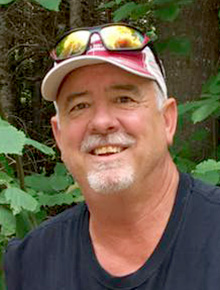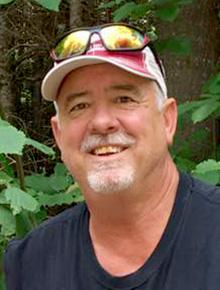
Does anybody know what I am talking about when I call a bird a “shy poke”? This was the name I first learned from my grandpa, Arnold Bender, who lived in Leola, South Dakota. This is the nickname for the great blue heron. Another name for them is a looper. This is for their large slow wind beats.
The great blue heron was the subject of many watercolor paintings by my favorite wildlife artist, Jerry Raedeke.
The heron is a very cool bird that looks like a stork of some kind. Herons are not very populous but are not considered birds that need any special conservation measures to protect them beyond the fact that it is illegal to shoot them.
The heron nests in what is called a rookery. When you see one heron nest, you will most likely see many. They nest high in trees near wetlands, sloughs or other impeded slow-moving water.
They are not architects by any means. They build a nest of sticks, and it is often used for many years. Nests can get quite big. Herons choose a different mate each year, and the female lays four to six eggs one time per year.
Too much human intrusion during nesting often ends in nest failure. The young look really goofy standing in a nest. Their favorite spots around here are in dead cottonwood trees. I once saw that the tree had fallen down and the young were sitting about two feet off the ground in what was left of it.
They eat primarily fish and swallow their meals whole. They also eat rodents, snails, crab, crayfish, insects and even duckling, if the opportunity presents itself. My research tells me they will even eat a gopher if one wanders by.
They are quite solitary when not in the breeding season. They have special feathers called powder down that grow continuously on their chest. They preen those feathers with a claw on their center toe. They apply the powder down from those special feathers to their under parts to keep the slime of fish and other oils from building up on their feathers.
They look really big, but in actuality they only weigh between 5-6 pounds. They have a very long neck that is specially designed to allow them to lunge at fish close by. Vibration in the water is picked up by their feet so they can feed even if they cannot see the prey. They can be a pain if you operate a fish hatchery or stock your small pond. When I see them, they are primarily eating bullheads. I don’t think they have any impact on any of the fisheries’ resources in our area.
I know for a fact they won’t stay in the same area as an eagle. There was one group of about 8-10 heron nests, and when an eagle decided to set up shop, the herons were all gone within one week. The wind blew the eagle nest down and the herons were back the following year.
There is another bird that lives in our area called a green heron. No family resemblance exists. A green heron only stands about 12 inches tall, and a great blue heron might reach 4 feet or more in height.
I was finishing up my weekend volunteer efforts and was sitting on the deck at my wildlife property. There are three pairs of resident great blue herons there. As I listened to the house wrens, redwing blackbirds and wood ducks flying overhead, I saw on the horizon a pair of great blue herons looping their way by. They are slow flyers and graceful as all day. They short-circled and landed in one of the backwater ponds on my property.
As I sat there by myself, I was overtaken by the diversity and the beauty of God’s creatures. I watched them for about an hour and was thankful for the day. I was in a really good place.
If you haven’t taken the time to go for a wildlife ride, please make a plan to do so. We live in robust ag country but there are still oases of public land and wildlife habitat that you can utilize.
Slow down like the great blue heron, be a shy poke and let your eyes and ears take you to your really good place.
Scott Rall, Worthington, is a habitat conservationist, avid hunting and fishing enthusiast and is president of Nobles County Pheasants Forever. He can be reached at scottarall@gmail.com. or on Twitter @habitat champion.



